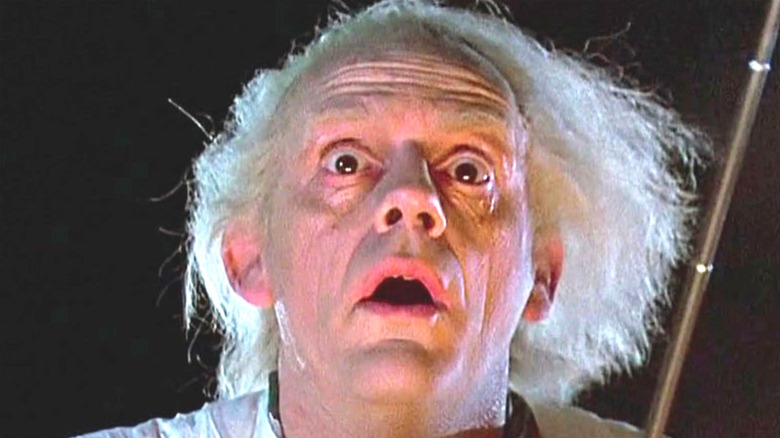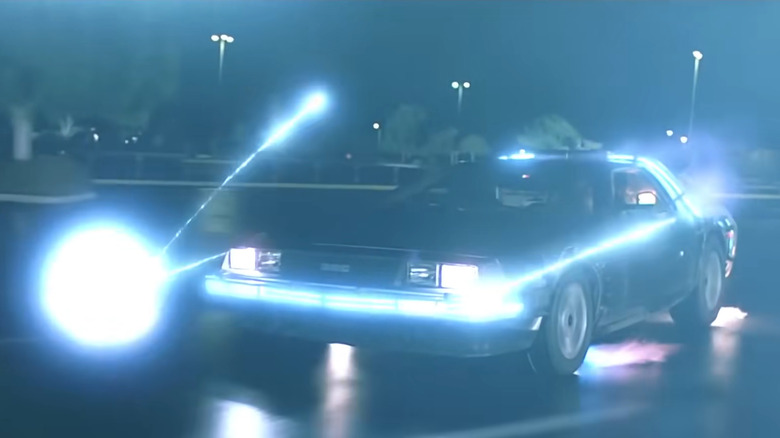How The DeLorean Actually Made It Difficult To Film Back To The Future
Alongside the Batmobile and the Ecto-1 from "Ghostbusters," Doc Brown's (Christopher Lloyd) DeLorean is one of the most iconic modes of movie transportation ever to hit the road (or take off from it). Sending Marty McFly (Michael J. Fox) back and forth through time in the beloved "Back to the Future" trilogy, the car model sold terribly following its debut (via The Drum) but gained a second life on the big screen when it became a time machine in Robert Zemeckis' beloved decade-skipping franchise. Now it's more associated with the collection of sci-fi comedy films than even its time on the road, earning widespread notoriety, just not as intended.
Regardless of its place in Hollywood history, the DeLorean wasn't always the initial choice for Marty and Doc's groundbreaking ride. Other contenders were waiting in the garage before that noticeable car came along, and even when it did, it wasn't without its issues, which came close to putting the film on a highway to hell.
The time machine's test run was planned in a desert, not a deserted parking lot
The sight of the DeLorean rolling out of Doc's truck with smoke billowing all around it is imprinted in the brains of "Back to the Future" fans forever. However, the movie's writers, Robert Zemeckis and Bob Gale, originally had something very different in mind. According to Caseen Gaines' book "We Don't Need Road: The Making of the Back to the Future Trilogy," the first iteration of the film's time machine didn't run on wheels. In fact, it didn't run anywhere, at all.
Initially, the gadget was set to be stationary in the back of a pickup truck and tested by Doc and Marty out in the desert, with a power surge sending our hero to where he didn't belong. The idea soon changed, though, when Zemeckis and Gale settled on integrating the time machine into the now-famous DeLorean DMC-12. However, the decision did spark issues. Not only was it unable to reach the desired 88 mph, but the back of the car also had to be removed when filming through the windshield because of its cramped design.
This issue didn't go unnoticed by the cast either, with Christopher Lloyd revealing to Gaines how a scene with Doc's dog, Einstein, led to a considerably smelly sequence (via CheatSheet). "He did not smell too good," Lloyd recalled. "We got pretty close and it got pretty stagnant in there." Outside looking in, of course, the DeLorean, even with its setbacks, is still a timeless piece of history and a truly memorable cinematic vehicle.

